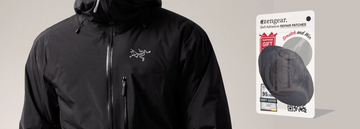Tender Loving Care (TLC) for Busy Feet: How to Look After Hiking Feet
by Emily Jannet on Nov 03, 2022
The satisfaction that accompanies a long and successful day on the trail really is something else. You’ve surpassed your own expectations, you’ve visited somewhere new, and you’re generally feeling quite pleased with yourself.
Unfortunately, the resulting sore spots, blisters and chafing your feet suffer do a great job steering things in a more miserable direction. The hike was fantastic, but the aftereffects are anything but.
As is the case with most things, preventing post-hike problems like these is much easier than correcting them. Depending on their severity, blisters and broken skin can take anything from a few days to a few weeks to fully heal.
During which, you’re going to have trouble handling anything more than a steady walk, let alone an adventurous hike.
On the plus side, showing your feet a little TLC to prevent issues like these from occurring isn’t too difficult. Nor does it have to be expensive, if you set your sights on sensibly-priced gear from a reliable manufacturer.
The Best Socks and Footwear For Hiking
One essential tip for lightening the load on your feet is to do just that. Never carry more than you need to, and try to keep the weight of your pack to the bare minimum. Always remember that every 500g (or less) you add to your pack takes a further toll on your feet – particularly when things get challenging on the trail.
Other than this, keeping blisters and bothersome sore spots at bay is as simple as choosing the best socks and footwear for your hike. It may seem like there’s a dizzying array of options available (which there is), but narrowing things down can actually be quite straightforward.
Product Spotlight:
Compression Socks for Men & Women (20-30 mmHg / Class 2)
- ERGONOMIC FIT & TRUE GRADUATED COMPRESSION - protect from cramps, reduce leg swelling & fatigue, improve blood circulation & muscle recovery
- ANTI-DVT FLIGHT SOCKS - keep your skin healthy, prevent from odours & allergies
- DOUBLE-STITCHED WITH SEAMLESS TOE - machine washable fabric (65% nylon, 20% elastane, 15% lycra); perfect for high intensity activities or long-term wear
- CUSHIONED & BREATHABLE CALF PRESSURE SUPPORT - prevent blisters & provide extra comfort at the toes, heel, sole of foot & achilles tendon
Hiking Socks
For example, the best hiking socks are those that fit your feet to perfection, dry fast, and feel fabulously comfortable in your boots. Compression socks can make all the difference when out and about on a trail, which are designed to apply just the right amount of pressure to stimulate and optimise blood flow. They can also be supremely comfortable, and provide the warmth you need when hiking in cooler weather.
Either way, you need to be looking for hiking socks that are designed to wick sweat away from the skin, so that they don’t become overly moist and end up chafing. You also need to ensure that they do not crease or bunch up in your boots, as this will inevitably lead to painful pressure points and sore spots.
If this is your first time shopping for compression stockings or socks for hiking, feel free to ask your retailer for their recommendations and advice.
Footwear for Hiking
The same basic principles apply when shopping for hiking boots or shoes. Your goal should be to pick up something designed to sidestep the main causes of blisters – moisture, pressure, and friction.
This means selecting hiking shoes that do not rub or pinch uncomfortably, and taking the time to break them in sufficiently before you head out and about. Don’t instinctively go for boots that are 100% waterproof, as it may be better to wear something that is more breathable. That said, if there’s a good chance of your boots getting soaked while out on the trail, you’re going to need something fully waterproof.
Lightweight boots with just the right amount of insulation are the way to go. In addition, consider adding insoles or other protective inserts into your hiking boots. Some of the better examples on the market really can make all the difference, where painful pressure points are concerned.
Lastly, if you have never had your feet professionally measured for shoes or boots, head to your local shoe shop and get it done. You may be surprised to learn that what you think is your ideal shoe size is actually anything but.






